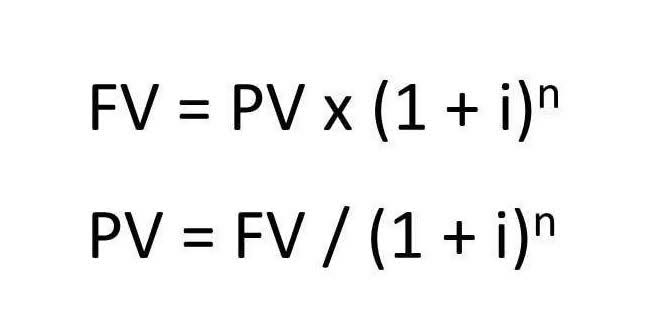
When a company consistently experiences net losses, those losses deplete its retained earnings. Prolonged periods of declining sales, increased expenses, or unsuccessful business ventures can lead to negative retained earnings. Positive retained earnings signify financial stability and the ability to reinvest in the company’s growth. This usually gives companies more options to recording transactions fund expansions and other initiatives without relying on high-interest loans or other debt. Many companies consider dividend payouts and plan investment strategies at year end.
- They do not represent assets or cash balances that companies have kept.
- As such, retained earnings are the main way that sole traders – which can’t sell shares – can grow owner’s equity.
- Retained earnings provide a clear picture of a company’s financial health and its potential for future growth.
- Because the company has not created any real value simply by announcing a stock dividend, the per-share market price is adjusted according to the proportion of the stock dividend.
- As a result, additional paid-in capital is the amount of equity available to fund growth.
- When a company chooses to reinvest its profits rather than distribute them as dividends, it signals a commitment to long-term development.
Shareholder Equity Impact
However, it also subtracts dividends paid to shareholders in the past first. Company management usually decides if profits are used to pay shareholder dividends or set aside for retained why is retained earnings not an asset earnings. That said, it’s possible for shareholders to challenge this through a majority vote, as the real business owners decided their purchase of common stocks.
Is Retained Earnings a Debit or Credit?
Profit is the company’s bottom line – its total income earned from the sale of goods and services. It usually refers to net income, or the total income minus the cost of doing business (e.g., overhead costs and payroll). Gross income is the income for goods sold minus the cost of goods sold. Retained earnings are the net income of a business after dividends have been paid out to shareholders and/or owners.
- Since retained earnings can be used to buy assets, people sometimes wonder if retained earnings are an asset.
- You’ll need to know your previous retained earnings, your net income and the dividends you’ve paid.
- So, no, retained earnings are not considered an asset on a balance sheet.
- Any factors that affect net income to increase or decrease will also ultimately affect retained earnings.
- Retained earnings appear under shareholders’ equity on the balance sheet and are affected by net income and dividend payouts.
Is Your Business Partnering with Dishonest Vendors?
Additionally, stockholders could see the benefits that future use offers over dividend payments. Subsequently, this capital could be used to increase productivity or aid the company overall. They are part of a company’s total equity that is derived from its accumulated net income. Therefore, retained earnings are usually recorded under the equity section on a company’s balance sheet.
How are retained earnings reported on financial statements?

Over time, as companies accumulate profits they must record them on the balance sheet as a balance. A potential buyer might use the equity section of the balance sheet and its line items to decide whether there are assets that could be stripped away without damaging the underlying business. The retained earnings balance can also be used to calculate financial ratios, including debt-to-income and acid-test ratios. A balance sheet is a key financial statement that provides a telling snapshot of what a company owns and owes, as well as revealing how much shareholders have invested in it.


For the past 52 years, Harold Averkamp (CPA, MBA) hasworked as an accounting supervisor, manager, consultant, university instructor, and innovator in teaching accounting online. He is the sole author of all the materials on AccountingCoach.com. For the past 52 years, Harold Averkamp (CPA, MBA) has worked as an accounting supervisor, manager, consultant, university instructor, and innovator in teaching accounting online. These articles and related content is the property of The Sage Group plc or its contractors or its licensors (“Sage”). Accordingly, Sage does not provide advice per the information included. These articles and related content is not a substitute for the guidance of a lawyer (and especially for questions related to GDPR), tax, or compliance professional.
Can retained earnings be used to calculate a company’s value?
- However, it can be challenged by the shareholders through a majority vote, as they are the actual owners of the company.
- Subsequently, those are then retained by the company, hence the name.
- Other financial metrics, such as liquidity ratios, debt levels, and profitability margins, should also be considered in conjunction with retained earnings for a comprehensive analysis.
- This financial stability not only reassures investors but also provides the flexibility to seize new opportunities as they arise.
- Specifically, the income that is made from sales is the profit figure.
- Although the name is fairly self-explanatory, let’s delve into just what retained earnings are.
- Yet one important facet of business operations is the functionality of retained earnings and whether or not they are an asset.
Since there is a net loss from the profit and loss account, dividends to any shareholders will not be distributed. Calculate the retained earnings of the company for the period ending in 2019. On one hand, high retained earnings could indicate financial strength since it demonstrates a track record of profitability in previous years. On the other Online Bookkeeping hand, it could be indicative of a company that should consider paying more dividends to its shareholders. This, of course, depends on whether the company has been pursuing profitable growth opportunities.
How can Retained Earnings result in an increase in assets?

Retained earnings are a critical part of your accounting cycle that helps any small business owner grow their business. It’s the number that indicates how much capital you can reinvest in growing your business. For example, if you’re looking to bring on investors, retained earnings are a key part of your shareholder equity and book value. This number’s a must.Ultimately, before you start to grow by hiring more people or launching a new product, you need a firm grasp on how much money you can actually commit. In the next accounting cycle, the RE ending balance from the previous accounting period will now become the retained earnings beginning balance.
Want to make sure your retained earnings calculations are accurate? You can learn more about FreshBooks by visiting their official website. Retained earnings are important for the assessment of the financial health of a company. That net income lets the company distribute money to shareholders or use it to invest in its own growth. Revenue, net profit, and retained earnings are terms frequently used on a company’s balance sheet, but it’s important to understand their differences.




